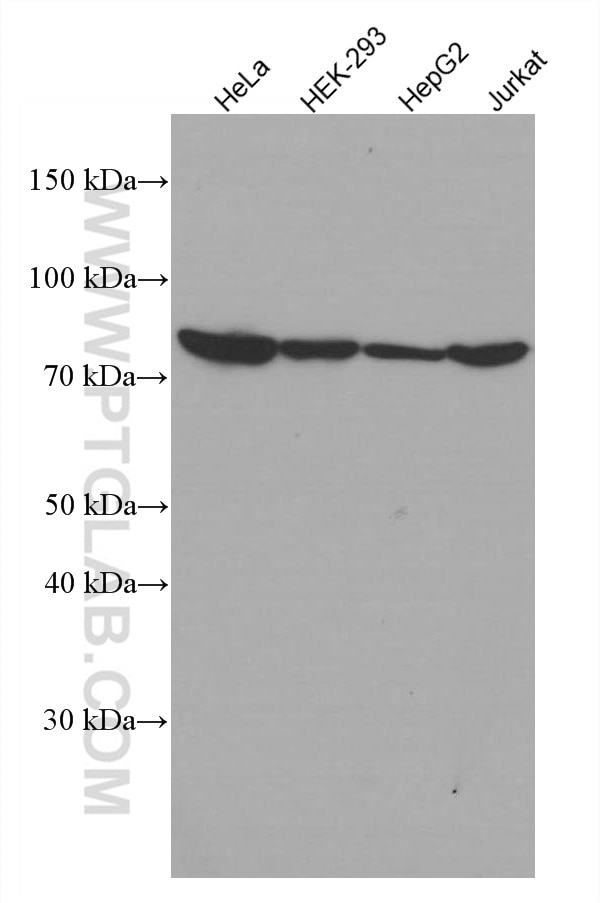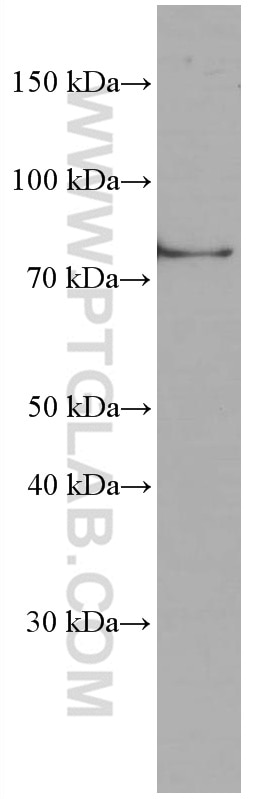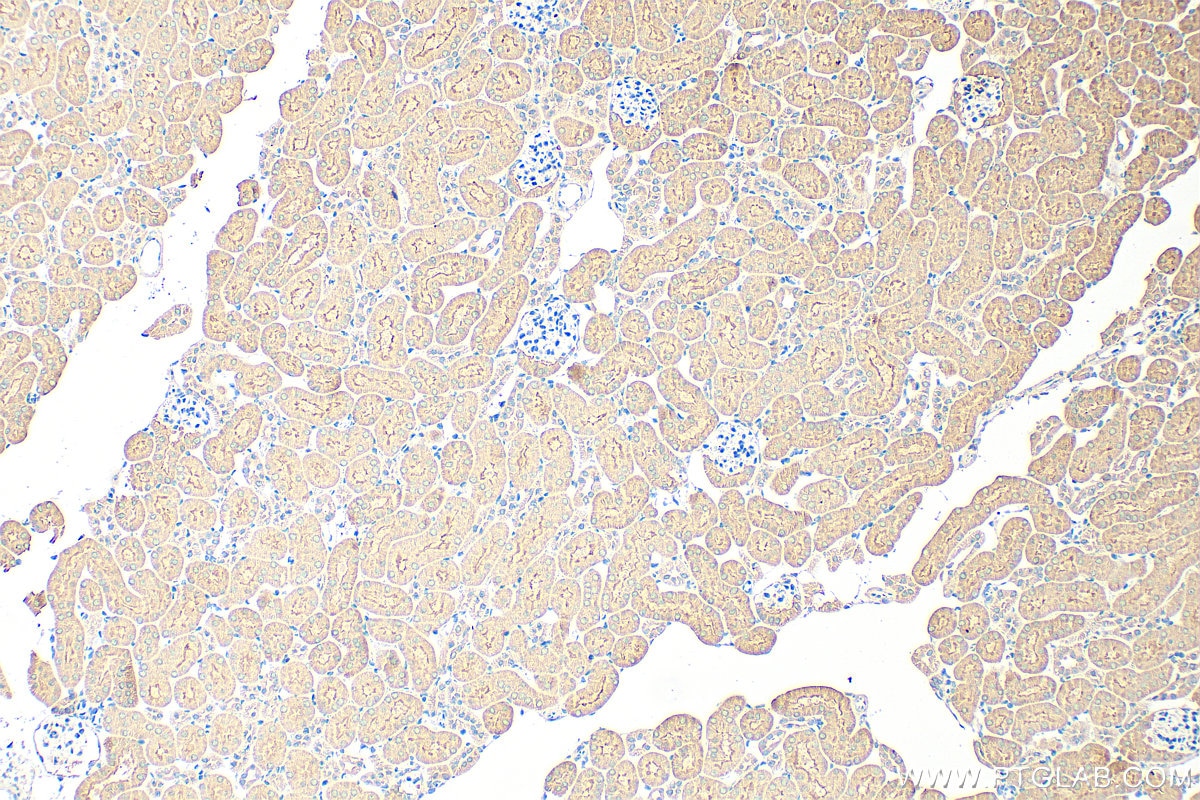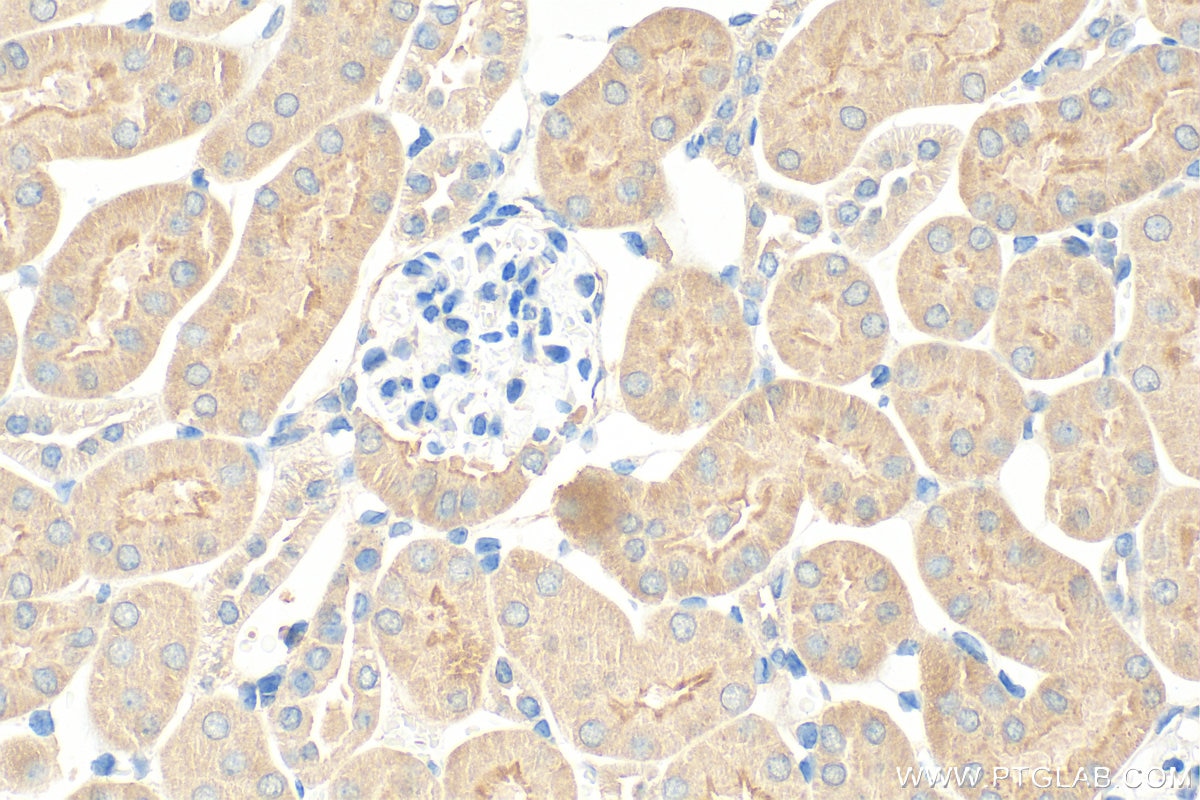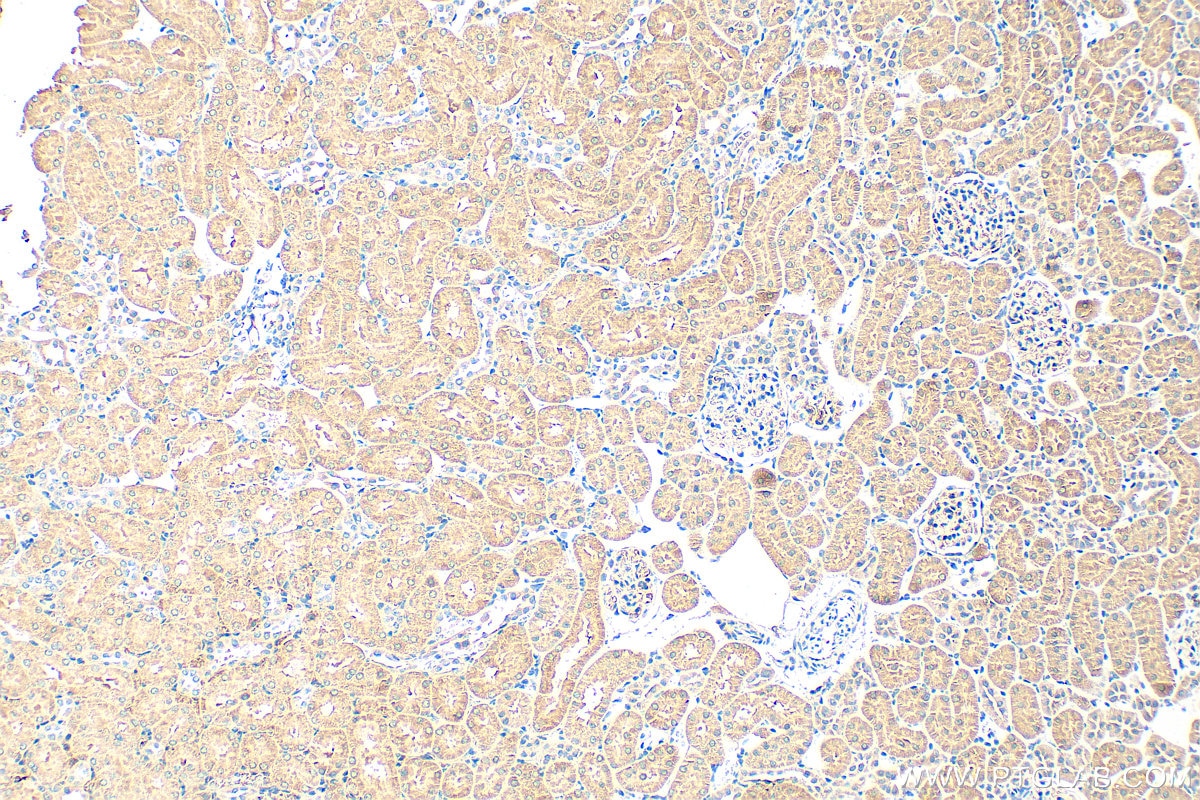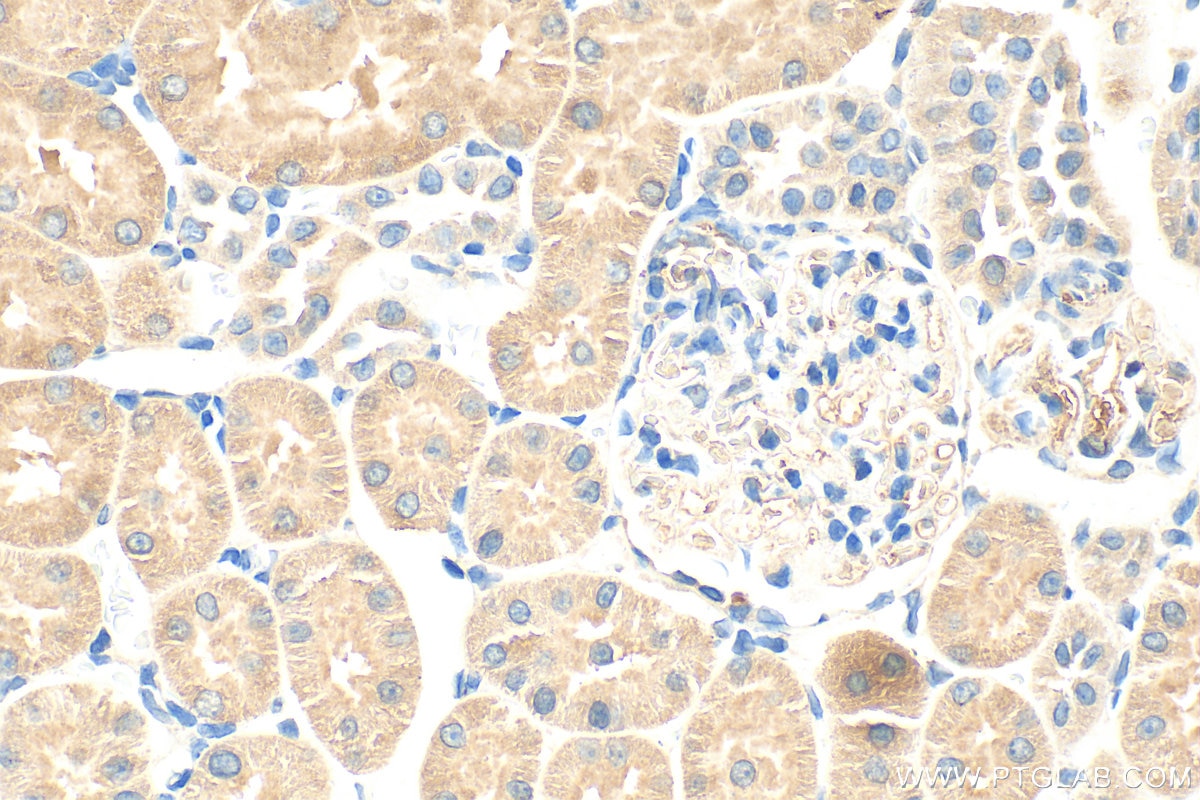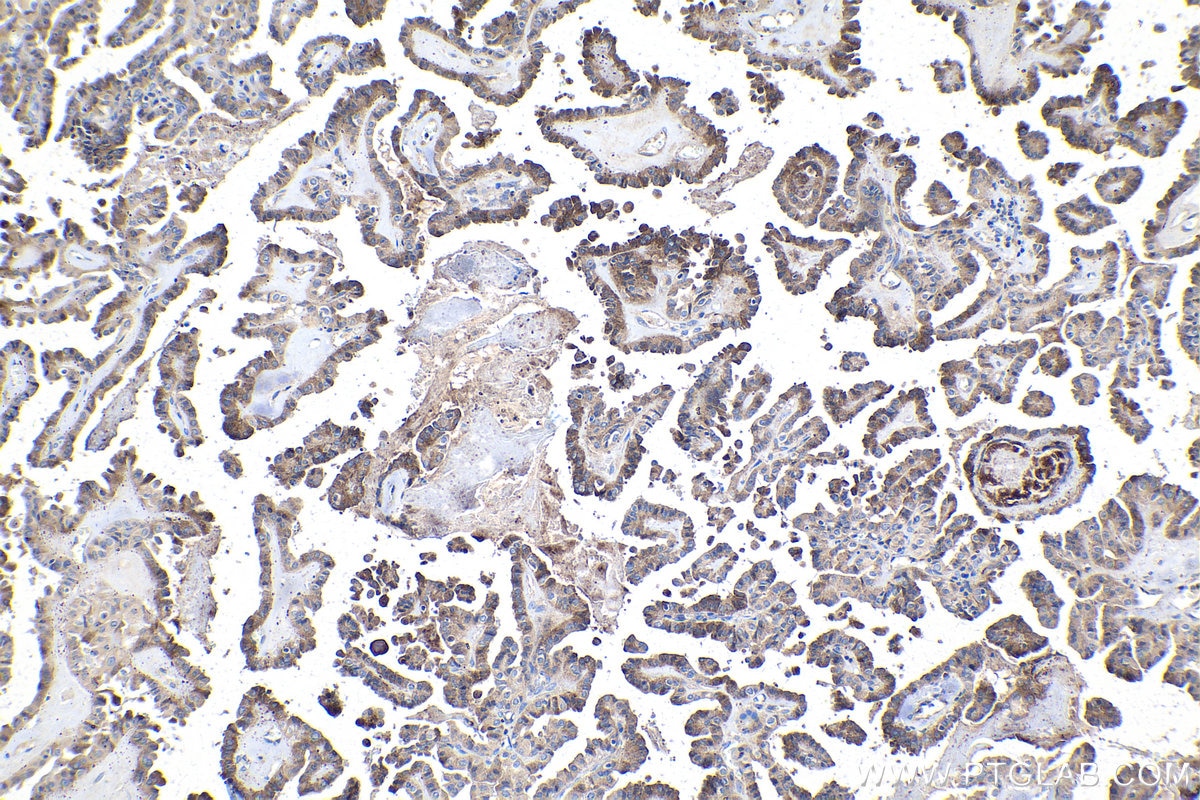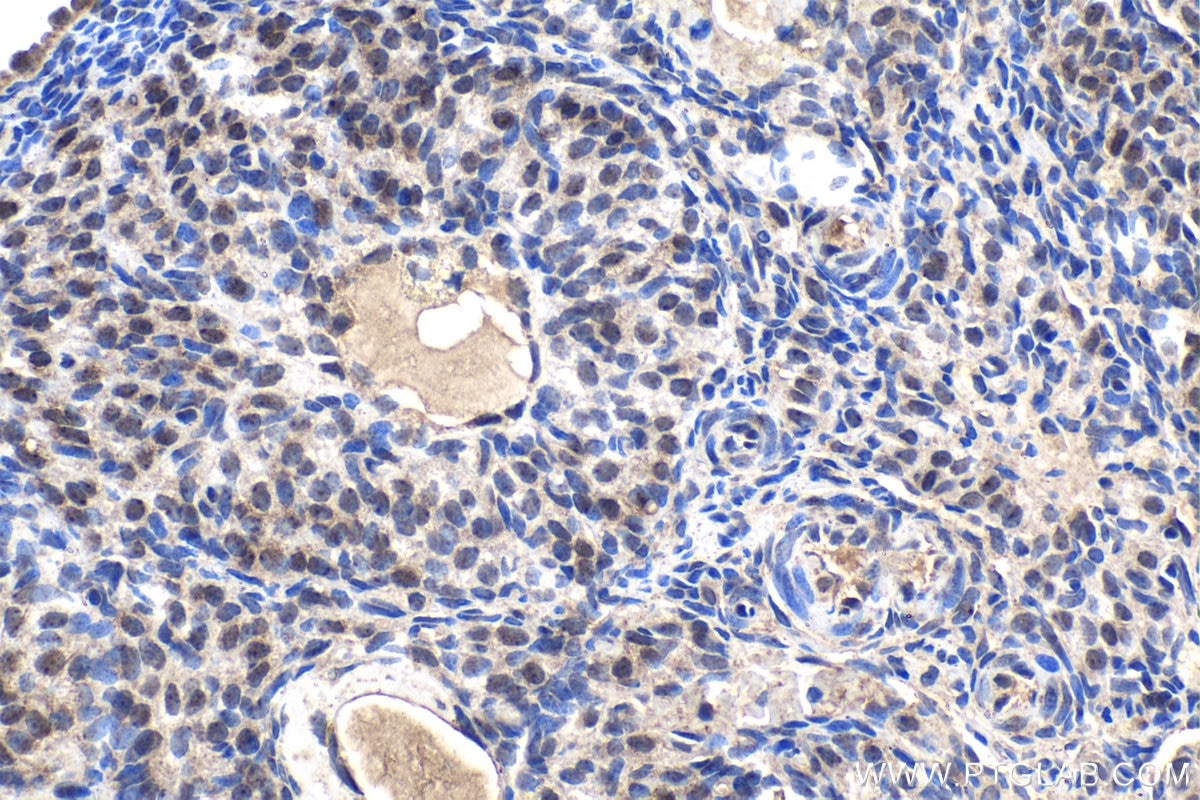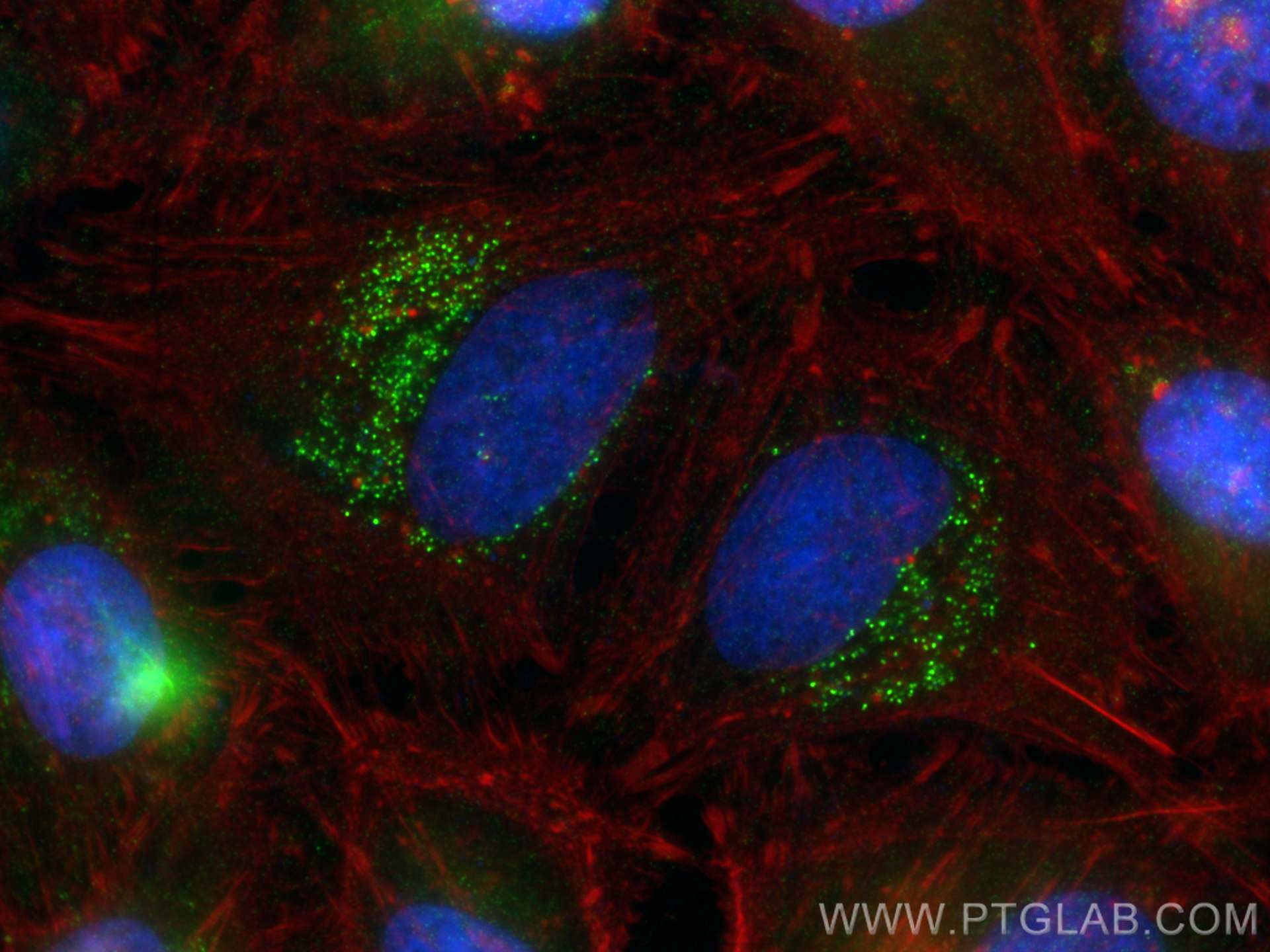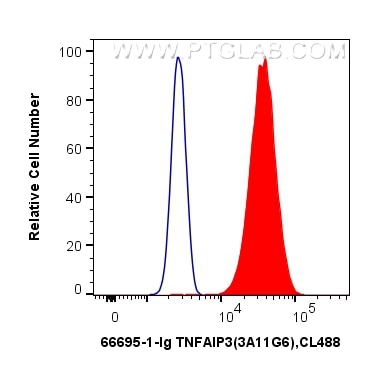Anticorps Monoclonal anti-TNFAIP3
TNFAIP3 Monoclonal Antibody for WB, IHC, IF/ICC, FC (Intra), ELISA
Hôte / Isotype
Mouse / IgG1
Réactivité testée
Humain, rat, souris
Applications
WB, IHC, IF/ICC, FC (Intra), ELISA
Conjugaison
Non conjugué
CloneNo.
3A11G6
N° de cat : 66695-1-Ig
Synonymes
Galerie de données de validation
Applications testées
| Résultats positifs en WB | cellules HeLa, cellules HEK-293, cellules HepG2, cellules HSC-T6, cellules Jurkat |
| Résultats positifs en IHC | tissu rénal de rat, tissu de cancer de la thyroïde humain, tissu ovarien de rat, tissu rénal de souris il est suggéré de démasquer l'antigène avec un tampon de TE buffer pH 9.0; (*) À défaut, 'le démasquage de l'antigène peut être 'effectué avec un tampon citrate pH 6,0. |
| Résultats positifs en IF/ICC | cellules HeLa, |
| Résultats positifs en FC (Intra) | cellules HeLa, |
Dilution recommandée
| Application | Dilution |
|---|---|
| Western Blot (WB) | WB : 1:1000-1:6000 |
| Immunohistochimie (IHC) | IHC : 1:500-1:2000 |
| Immunofluorescence (IF)/ICC | IF/ICC : 1:400-1:1600 |
| Flow Cytometry (FC) (INTRA) | FC (INTRA) : 0.50 ug per 10^6 cells in a 100 µl suspension |
| It is recommended that this reagent should be titrated in each testing system to obtain optimal results. | |
| Sample-dependent, check data in validation data gallery | |
Applications publiées
| WB | See 2 publications below |
| IHC | See 3 publications below |
| IF | See 3 publications below |
Informations sur le produit
66695-1-Ig cible TNFAIP3 dans les applications de WB, IHC, IF/ICC, FC (Intra), ELISA et montre une réactivité avec des échantillons Humain, rat, souris
| Réactivité | Humain, rat, souris |
| Réactivité citée | Humain, souris |
| Hôte / Isotype | Mouse / IgG1 |
| Clonalité | Monoclonal |
| Type | Anticorps |
| Immunogène | TNFAIP3 Protéine recombinante Ag18150 |
| Nom complet | tumor necrosis factor, alpha-induced protein 3 |
| Masse moléculaire calculée | 790 aa, 90 kDa |
| Poids moléculaire observé | 80 kDa |
| Numéro d’acquisition GenBank | BC114480 |
| Symbole du gène | TNFAIP3 |
| Identification du gène (NCBI) | 7128 |
| Conjugaison | Non conjugué |
| Forme | Liquide |
| Méthode de purification | Purification par protéine G |
| Tampon de stockage | PBS with 0.02% sodium azide and 50% glycerol |
| Conditions de stockage | Stocker à -20°C. Stable pendant un an après l'expédition. L'aliquotage n'est pas nécessaire pour le stockage à -20oC Les 20ul contiennent 0,1% de BSA. |
Informations générales
TNFAIP3, also named A20, is a cytoplasmic zinc finger protein that inhibits nuclear factor kappa-B (NFKB) activity and tumor necrosis factor (TNF)-mediated programmed cell death. A20 is a ubiquitin-editing enzyme that contains both ubiquitin ligase and deubiquitinase activities, and involved in immune and inflammatory responses signaled by cytokines, such as TNF-alpha and IL-1 beta, or pathogens via Toll-like receptors (TLRs) through terminating NF-kappa-B activity.
Protocole
| Product Specific Protocols | |
|---|---|
| WB protocol for TNFAIP3 antibody 66695-1-Ig | Download protocol |
| IHC protocol for TNFAIP3 antibody 66695-1-Ig | Download protocol |
| IF protocol for TNFAIP3 antibody 66695-1-Ig | Download protocol |
| Standard Protocols | |
|---|---|
| Click here to view our Standard Protocols |
Publications
| Species | Application | Title |
|---|---|---|
Biochim Biophys Acta Mol Basis Dis Rhythm gene PER1 mediates ferroptosis and lipid metabolism through SREBF2/ALOX15 axis in polycystic ovary syndrome | ||
Biology (Basel) Interleukin-10 Deficiency Impacts on TNF-Induced NFκB Regulated Responses In Vivo | ||
Cell Death Dis A20 targets PFKL and glycolysis to inhibit the progression of hepatocellular carcinoma. | ||
Sci Total Environ Alpha-ketoglutarate alleviates cadmium-induced inflammation by inhibiting the HIF1A-TNFAIP3 pathway in hepatocytes | ||
Immunity Integrated computational analysis identifies therapeutic targets with dual action in cancer cells and T cells | ||
Invest Ophthalmol Vis Sci Global MicroRNA Profiling of HSV-1 Infected Cornea Identifies miR-329 as a Novel Regulator of Virus Infection |
